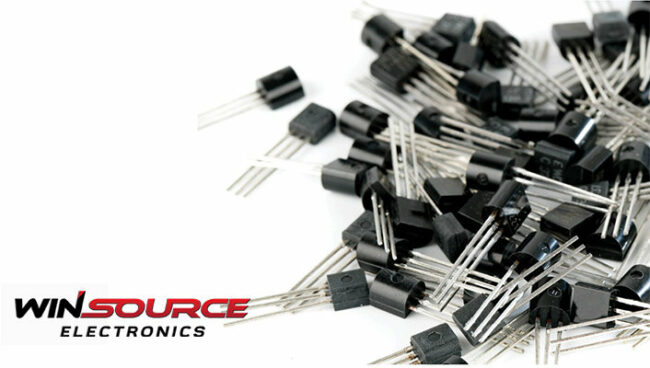
Transistors, often no larger than a grain of sand, wield a colossal influence over our modern world. These simple devices have revolutionized our communication, computing, and interaction with technology.
This downsizing has resulted in powerful compact devices like smartphones, tablets, and wearable gadgets. Transistors are the elementary elements of ICs.
WIN SOURCE offers a vast number of quality electronic components including transistors, ICs, resistors, isolators and more. We will help you to understand how Transistors work. It will help you to get a deep understanding of how the daily smart accessories work.
Table of Contents
ToggleCore Structure of Transistors
Transistors are intricate puzzles made out of semiconductor materials, including silicon. These puzzles are pieced together in layers—namely, the emitter, base, and collector.
The meticulous arrangement of these layers, whether NPN or PNP, orchestrates the very essence of the transistor’s purpose and functionality.
Unraveling the Operation Modes of Transistors
First, there’s the active mode, where controlled currents flow between the collector and emitter. The current amplification factor β=ΔIc/ΔIb. Then, in the cutoff mode, the curtains draw on current, rendering the transistor inactive.
Lastly, in the saturation mode, a symphony of current flows in full bloom between the collector and emitter.
Working Principle of Transistors
The heart of the matter lies in the mastery of current flow. Within the NPN transistor, a mere whisper of current into the base triggers a grander current parade between the collector and emitter. This current amplification, akin to an artist’s brush stroke on a canvas, births the transistor’s dual identity: switch and amplifier, contingent upon its configuration.
Imagine an amplifier circuit as a virtuoso’s stage—a small signal takes its bow at the base terminal, compelling the transistor to manipulate a grander current ballet between collector and emitter. The result? A symphonic surge, an augmented signal, unsullied by distortion.
Transistors are used extensively in electronics for amplification and switching. They’re applied as amplifiers because they amplify weak input signals, making them strong and suitable to various applications. Transistors offer efficiency, compactness, stability, precision control among other things. Therefore, they are essential in modern devices where signal enhancement is vital.
How to test a transistor?
● Identify pins: Emitter (E), Base (B), Collector (C).
● Set the multimeter to diode/transistor mode, NPN/PNP.
● For NPN: B-E forward-biased (0.6-0.7V), C-B reverse-biased.
● For PNP: E-B forward-biased (0.6-0.7V), C-B reverse-biased.
● C-E: No reading, reverse-biased.
● Optional: Test hFE (current gain) if available.
● If readings match, likely functional. If you find any Unexpected/no readings suggest a fault. Refer to specs and guidelines.
Hope you got a complete idea about how the transistor works. Our AS9120B-certified distributor offers a 3-year warranty on our components.You can check our product catalog and find out more!

COMMENTS